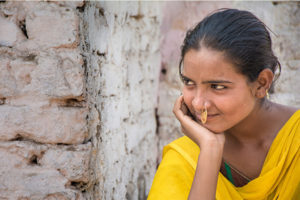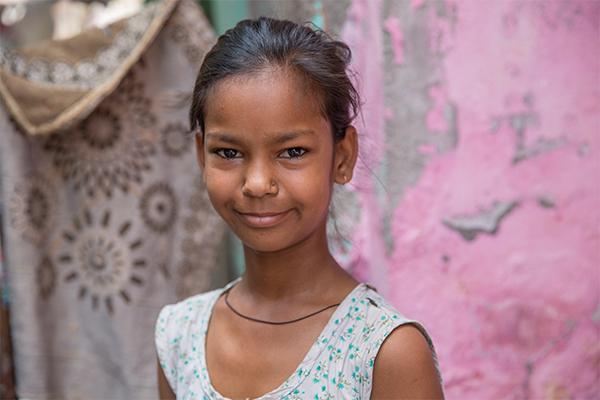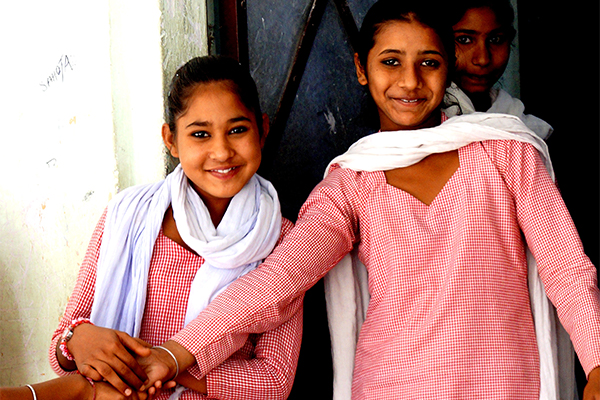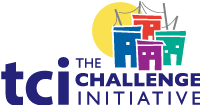AYSRH Toolkit
Advocating for Youth-Friendly Cities- Home
- Help and Support
- Close
- Toolkits
- Global Toolkit
- AYSRH Toolkit
- Hub Toolkits
- Core High-Impact Practices
- Gender Essentials Mini Course
- Close
- Resource Collection
- Community of Practice
- Coaching
- Log In/Register
- My Profile
- English
Positive Policy & Legal Environment

© 2014 Jignesh Patel , Courtesy of Photoshare
What Are the Benefits?
- Positive laws and policies raise the “rights consciousness” of youth, empowering them with the knowledge that they are entitled to SRH services and information.
- Laws and policies have the potential to influence social norms; if positive, they can help start discussions in communities where harmful norms persist.
- Laws and policies that positively articulate young people’s rights to access SRH services and information close loopholes that allow health providers to define their own restrictive criteria for access.
- Positive SRH laws and policies provide a basis for youth to seek redress for violations of their human rights, where possible.
- Laws and policies that facilitate youth access to contraception promote their participation in and control over their health decision-making.
How to Implement?
Global Human Rights Policy Framework
There are many areas of the law that impact upon the provision of and access to sexual and reproductive health services and information. The World Health Organization has set out a framework for ensuring human rights through the supply of contraceptive services and information, against which national laws and policies can be measured. The framework consists of a set of standards and principles and recommendations for how, practically, they should be integrated into policy and practice.
National and Sub-National Legal & Policy Frameworks
Many areas of law and policy impact youth access to SRH services and information; some impact directly, while others have an indirect influence. Below is a short, non-exhaustive list of the different areas of law and policy to keep in mind when implementing adolescent and youth sexual and reproductive health (AYSRH) programs.
| Area of law | How it impacts service provision |
| Sexual consent | Sexual consent laws may determine the age at which a person can legally consent to sexual activity, as defined in the law. In many places, this is set at 16 or 18 years of age, though it may be different for same-sex sexual activity. |
| Rape | Criminal law defines what type of conduct is considered “rape.” In many places, sex with a young woman under a certain age (e.g., 16) is criminalized in every circumstance; this is sometimes known as “statutory rape.” These provisions are often interpreted as setting the minimum age of sexual consent. These laws may also be gendered, in that young men’s experiences of rape are excluded from the legal definition. |
| Child protection | Child protection laws may place a duty of care on health providers to report certain information to third parties (e.g., police, social services) if they believe harm will come to a child in their care. In some contexts, health providers may be required to report children under a certain age who are engaged in sexual activity. |
| Medical consent | Medical consent laws often determine an age at which a person can independently consent to medical services. In some places, different ages apply to invasive procedures (e.g., surgery) and non-invasive ones. At times, the age of medical consent can be different for SRH services than for other health services. |
| Age of majority | Age of majority laws set the age at which young people are considered to be legal adults; this is often 18 years. In some contexts, the age of majority is confused with the age at which young people are legally able to consent to sex or access SRH services. It also influences how adults view young people under the age of majority. |
| Age of marriage | Age of marriage is the age at which a person can legally consent to marriage. The internationally-accepted minimum age of marriage is 18, although in some jurisdictions marriage below this age is allowed under customary law or in cases where parents give their consent. In some places, spousal consent is needed in order for women to access contraceptives even where their use is now legal before marriage. |
| SRH | SRH laws specify the services to be provided by the government to the population. The law may also mandate certain agencies (e.g., ministries of health) to provide services. In addition to primary legislation (acts, statutes), some countries also set out secondary legislation (policies, regulations, strategies, orders) that provide more detail as to how the primary legislation is to be implemented. |
| Comprehensive sexuality education (CSE) | CSE laws set out the topics to be included and the age groups that will receive CSE in schools, as well as the qualifications required of educators. Good CSE laws also make provisions for out-of-school young people, which is of great importance in urban environments. |
Advocacy
Step 1: Assess the legal and policy framework in your context
The first step in undertaking advocacy is to identify the problem. Assess existing national and sub-national laws and policies. Compare and contrast them with international human rights norms and evidence of what works with regard to young people’s sexual and reproductive health.
|
With TCI-supported States, TCI Nigeria conducted the Policy Environment Score (PES) to assess the degree to which each State’s policy environment supports the reproductive health of the population, with specific focus on access to high-quality family planning services, adolescent health, and other reproductive health services. To learn more about their findings, check out the full report, which includes the questionnaire.
Other TCI hubs relied on findings from PRB’s Youth Family Planning Policy Scorecard as their starting point. |
Step 2: Assess the legal and policy framework’s implementation and impact
The second step is to determine the extent to which national and sub-national laws and policies are being implemented in practice, and what the impact is on youth. Positive, well-articulated laws and policies may not be currently implemented; this may be because of a lack of financial or human resources, lack of political will, norms and stigma, or low legal literacy. An important part of this step is speaking with youth, perhaps using focus groups or interviews, to determine how laws and policies impact their ability to seek and access SRH services, information, and education.
|
Research: Over-protected and Under-served (Senegal) In 2012-2013, Coram Children’s Legal Center (CCLC) and the International Planned Parenthood Federation (IPPF) carried out research to determine how laws and policies affected youth access to SRH services. The methodology centered on youth’s voices, as well as those of providers and parents, in understanding how laws act as barriers or facilitators to services. The results show a discord between several laws and youth’s realities, including a law setting the age of sexual consent at 16. A law clearly affirming youth rights to contraceptive services was seen as an opportunity to advocate for better implementation and access. |
Step 3: Understand the avenues for accountability and integrate accountability into AYSRH programs
All young people have the rights to accountability and redress. Accountability mechanisms may exist in the legislative, executive, and judicial branches of government, while social accountability initiatives provide opportunities for communities to monitor the implementation of SRH law and policy. In the context of SRH, social accountability is also referred to as a “set of tools citizens can use to influence the quality of service delivery by holding providers to account” (Evidence Project, 2014). These tools include:
- Complaint mechanisms, which are formal channels for youth to express dissatisfaction with a service and demand redress.
- Citizen charters that articulate guidelines for the youth client and provider relationship, providing standards a client can expect and demand.
- Citizen report cards, which are participatory surveys that solicit youth’s feedback on the performance of public services.
- Social audits that engage youth, users of services, or civil society organizations in collecting and publicly sharing information on available resources for service delivery and public works.
- Community scorecards that combine social audits and citizen report cards, compiling information from users and service providers about a particular service. Data is reviewed to allow for immediate feedback and action plan development
All SRH programs should have established accountability mechanisms that provide a continuous feedback loop on quality, access, and human rights. At the very least, service-providing institutions can ensure that they have charters of clients’ rights and accompanying complaint mechanisms for clients whose rights are violated. On a larger scale, programs may wish to work with youth to organize citizen hearings or conduct inquiries into rights violations.
Step 4: Develop an advocacy strategy with youth
Adopt a systematic, step-by-step approach to building out an advocacy strategy with a group of stakeholders, including youth. The strategy development process should include identification of the problem, target audiences, goals, objectives, activities, and indicators. Prioritize the development of key messages; see page 10 of the Reproductive Health Supplies Coalition’s Youth People and Contraceptive Access: An advocacy and communications toolkit.
|
TCI’s Success Advocating for Youth-Friendly Cities
|
Tips
- The end goal is not the enactment of a better law or policy; rather, the implementation of a better law or policy. Advocacy can also focus on ensuring the implementation of an existing law or policy to its fullest extent.
- Advocate for laws and policies that positively articulate the rights of youth and the responsibilities of those in authority.
- Find champions within the institutions, agencies, and ministries you are working with who can help you navigate the processes of legal and policy reform and/or advocacy.
- The informal nature of some urban settlements means that governments may not officially take responsibility for providing health services in them. Advocate for youth living in such settlements (e.g., slum areas) to be treated as citizens with the same human rights as all others.
- When defining legal barriers, think not only about the laws that directly restrict youth access, but also those that reinforce harmful norms that perpetuate stigma around youth sexuality, pregnancy, and parenthood.
What is the Evidence?
- A strong policy framework should require health care providers to offer a full range of contraceptive methods with no restrictions, and include policies permitting youth to access contraception without parental or spousal consent. An enabling policy environment should include affirmative language and/or specific operational guidelines to support effective interventions.
- Where guidance on policy and expectations for providers is incomplete or confusing, it may contribute to reinforcing restrictive practices that adhere to providers’ own perceptions and expectations. For example, a study in Senegal found that even though there were no official age-related restrictions on youth access to SRH services, in practice, providers often imposed their own.
- Investments that contribute to building an enabling environment for adolescent programming often include ensuring legal rights, policies, and guidelines that respect, protect, and fulfill youth’s human rights to contraceptive information, products, and services regardless of age, sex, marital status, or parity.
- An evaluation of the SAFE program in the slums of Dhaka, Bangladesh highlighted the importance of the integration of legal services with SRH services for young women, given the high prevalence of gender-based violence in the community.
- There is a balance to be struck between protection and autonomy when it comes to youth SRH. At the same time, there should be recognition that the provision of services and information constitutes protection for youth.
TCI APP USERS PLEASE NOTE
You will only receive CERTIFICATES by email – when earning a score above 80% – and will not be able to view or print a certificate PDF from the TCI app.
Test Your Knowledge
Earn a Certificate
Quiz Summary
0 of 6 Questions completed
Questions:
Information
You have already completed the quiz before. Hence you can not start it again.
Quiz is loading…
You must sign in or sign up to start the quiz.
You must first complete the following:
Results
Results
0 of 6 Questions answered correctly
Your time:
Time has elapsed
You have reached 0 of 0 point(s), (0)
Earned Point(s): 0 of 0, (0)
0 Essay(s) Pending (Possible Point(s): 0)
Categories
- Not categorized 0%
- 1
- 2
- 3
- 4
- 5
- 6
- Current
- Review
- Answered
- Correct
- Incorrect
-
Question 1 of 6
1. Question
How do positive SRH laws and policies impact AYSRH service delivery?
CorrectIncorrect -
Question 2 of 6
2. Question
The first step in undertaking advocacy for a positive legal environment is to identify the problem(s) at a sub-national and national level.
CorrectIncorrect -
Question 3 of 6
3. Question
Social accountability tools that youth can use to influence the quality of service delivery include:
CorrectIncorrect -
Question 4 of 6
4. Question
The end goal is the enactment of a better policy, not implementation of a better law.
CorrectIncorrect -
Question 5 of 6
5. Question
How useful did you find the information and/or tools presented on this page? Please write your response in the box below using one of the following phrases: Very useful, Useful, Somewhat useful, Not useful.
Feel free to comment on why you made that choice.
-
This response will be awarded full points automatically, but it can be reviewed and adjusted after submission.
Grading can be reviewed and adjusted.Grading can be reviewed and adjusted. -
-
Question 6 of 6
6. Question
How do you intend to use the information reviewed and/or tools that you accessed?
-
This response will be awarded full points automatically, but it can be reviewed and adjusted after submission.
Grading can be reviewed and adjusted.Grading can be reviewed and adjusted. -
Approaches: Advocating for Youth-Friendly Cities
Helpful Tips
Youth Participation
- Provide solid examples of advocacy “wins” for youth advocates alongside the supporting activities and interventions that helped achieve them.
Data Management
- Document advocacy processes to allow other advocates to learn from your experiences and mistakes.
- Collect data to help policy makers understand whether their policies and laws are having the intended effect, including from the perspective of youth.
Multisectoral Collaboration
- Partner with groups of women and feminist lawyers who are familiar with processes for legal and policy reform.
Challenges
- Look for windows of opportunity, especially at the sub-national level where laws and policies are put into action. What policies and guideline reviews are currently underway that you may be able to influence?
- With advocacy efforts, there is a continued need to monitor the implementation of positive, rights-promoting laws and policies.
- The processes associated with changing laws and policies can be convoluted and, at times, hostile to civil society organizations.
Resources
Legal Assessment Tools and Resources
- WHO Ensuring human rights in the provision of contraceptive information and services: Guidance and recommendations
- WHO Ensuring human rights within contraceptive service delivery: Implementation guide
- WHO Ensuring human rights within contraceptive programmes: A human rights analysis of existing quantitative indicators
- WHO Sexual health, human rights and the law
- OHCHR Summary Reflection Guide on a Human Rights-Based Approach to Health: Application to sexual and reproductive health, maternal health and under-5 child health (for policy -makers)
- OHCHR Summary Reflection Guide on a Human Rights-Based Approach to Health: Application to sexual and reproductive health, maternal health and under-5 child health (for health workers)
- Sexual Rights Initiative National Law and Policy Database
- Population Reference Bureau Youth Family Planning Policy Scorecard
- International Planned Parenthood Federation Over-protected and under-served: Legal barriers to young people’s access to sexual and reproductive health services
Advocacy Tools
- IPPF WHR Handbook for Advocacy Planning
- PMNCH Advocating for Change for Adolescents!
- IPPF Want to change the world? Here’s how…Young people as Advocates
- Advance Family Planning Advocacy Portfolio
- Reproductive Health Supplies Coalition Youth People and Contraceptive Access: An advocacy and communications toolkit
- CARE The Community Score Card
- USAID The Role of Social Accountability in Improving Health Outcomes
Country Resources
Nigeria
- National Guidelines on Promoting Access of Young People to Adolescent and Youth-Friendly Services in Primary Health Care Facilities in Nigeria, 2013
- National Guidelines for the Integration of Adolescent and Youth Friendly Services Into Primary Health Care Facilities in Nigeria, 2013
- Clinical Protocol for the Health and Development of Adolescent and Young People in Nigeria, 2011
- National Family Planning/Reproductive Health Policy Guidelines and Standards of Practice, 2005
India
- National Youth Policy, 2014
- The Rashtriya Kishor Swasthya Karyakram (RKSK), 2014 (National Adolescent Health Strategy):
- RKSK Strategy Handbook;
- RKSK Operational Framework;
- Guidelines for implementation of RKSK
Kenya
- National Reproductive Health Policy
- Kenya Health Policy, 2012-2030
- National Family Planning Costed Implementation Plan, 2012-2016
- National Adolescent Sexual Reproductive Health Policy Implementation Framework, 2017-2021
- National Guidelines for Provision of Adolescent and Youth Friendly Services in Kenya, 2016
- Education Sector Policy on HIV and AIDS, Second Edition, 2013
- National Adolescent Sexual and Reproductive Health Policy
- Kenya National Youth Policy, 2006
- The National Adolescent Sexual and Reproductive Health Policy, 2015: Policy Brief
References
See a listing of all AYSRH references.






